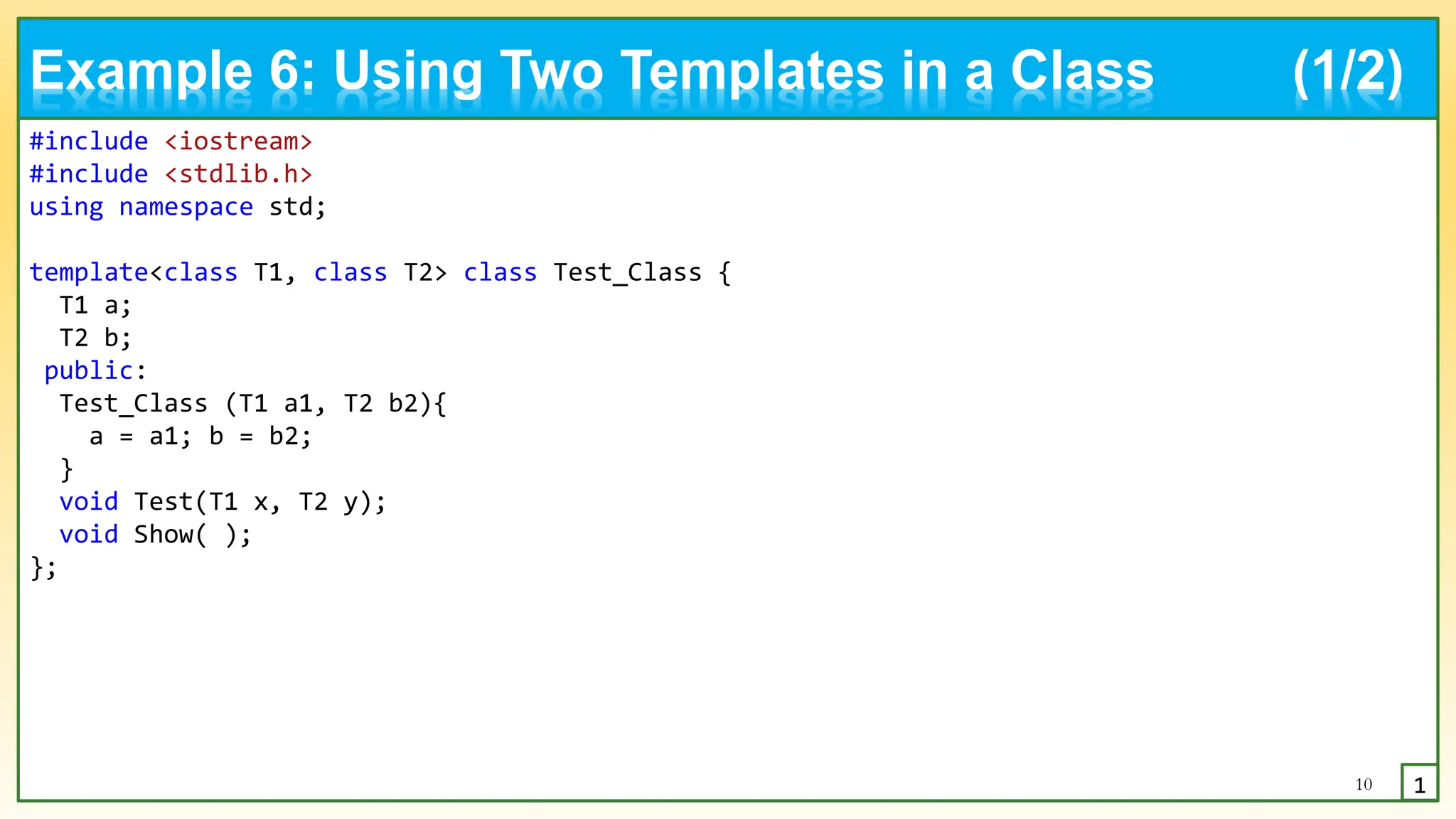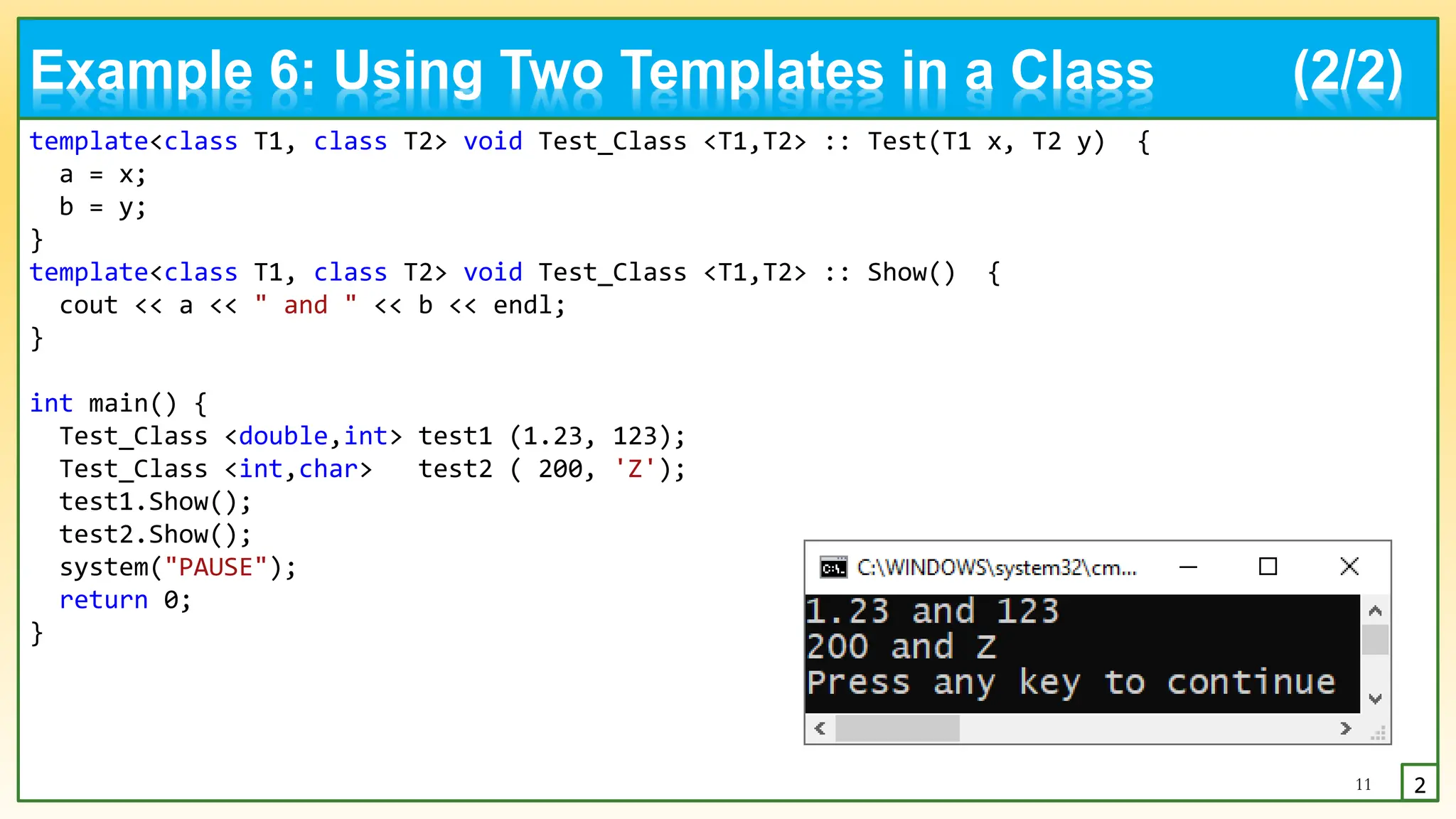The document explains the concept of templates in C++, highlighting function and class templates for writing generic programs. It provides multiple code examples demonstrating function overloading, template functions, and class templates for operations like addition, division, and the implementation of a stack. The text illustrates how templates can make code more efficient and easier to manage.

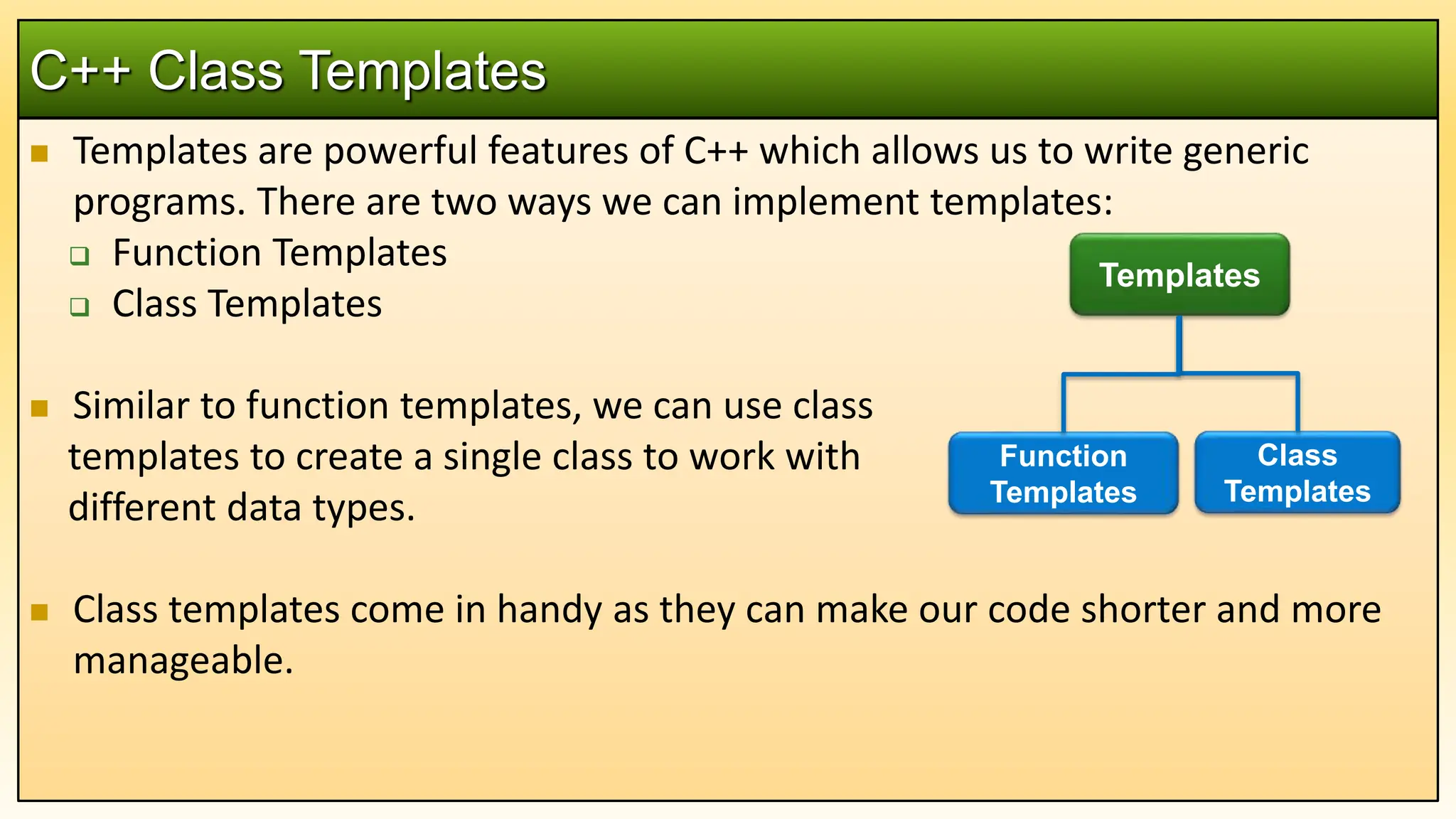
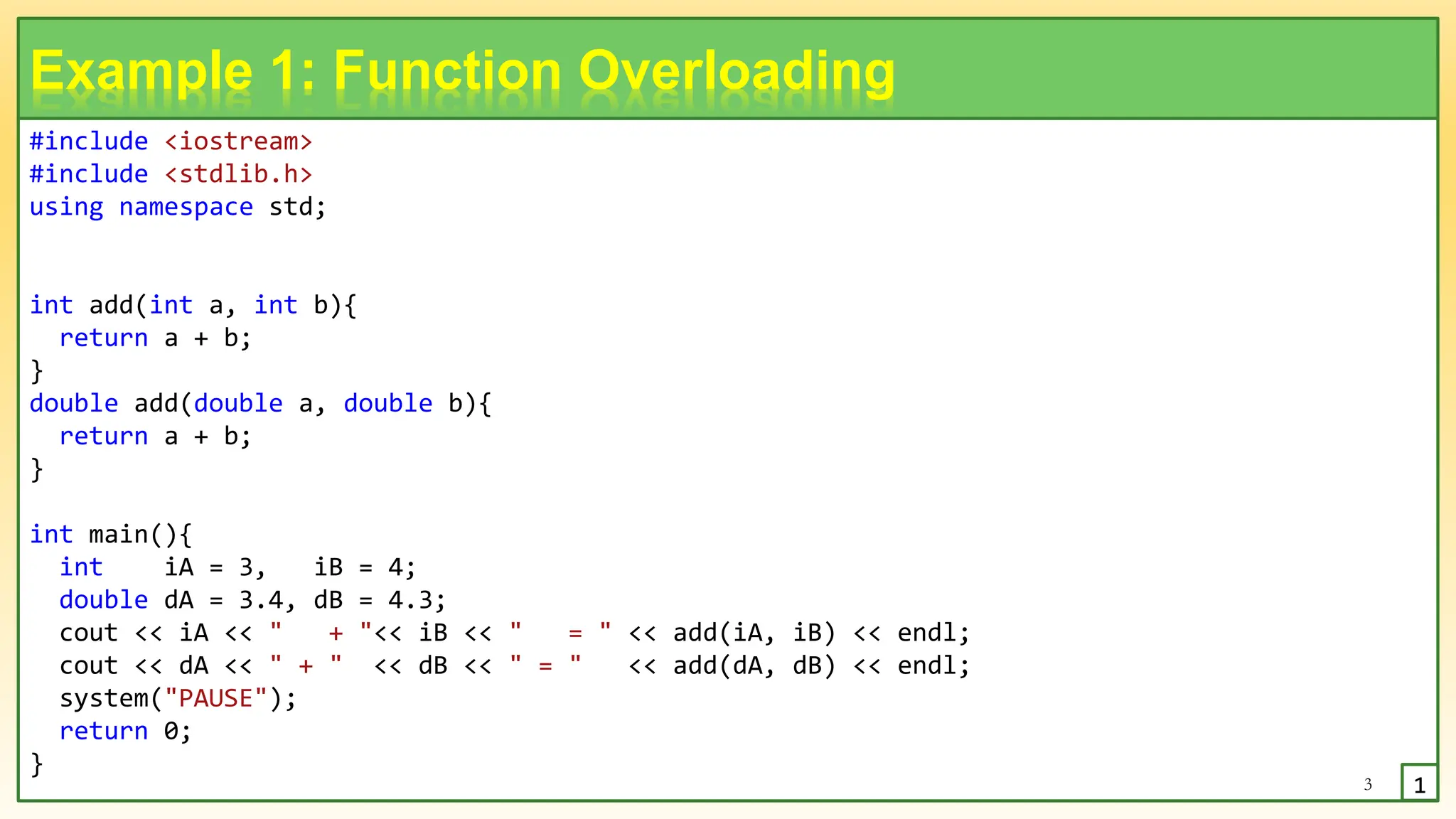
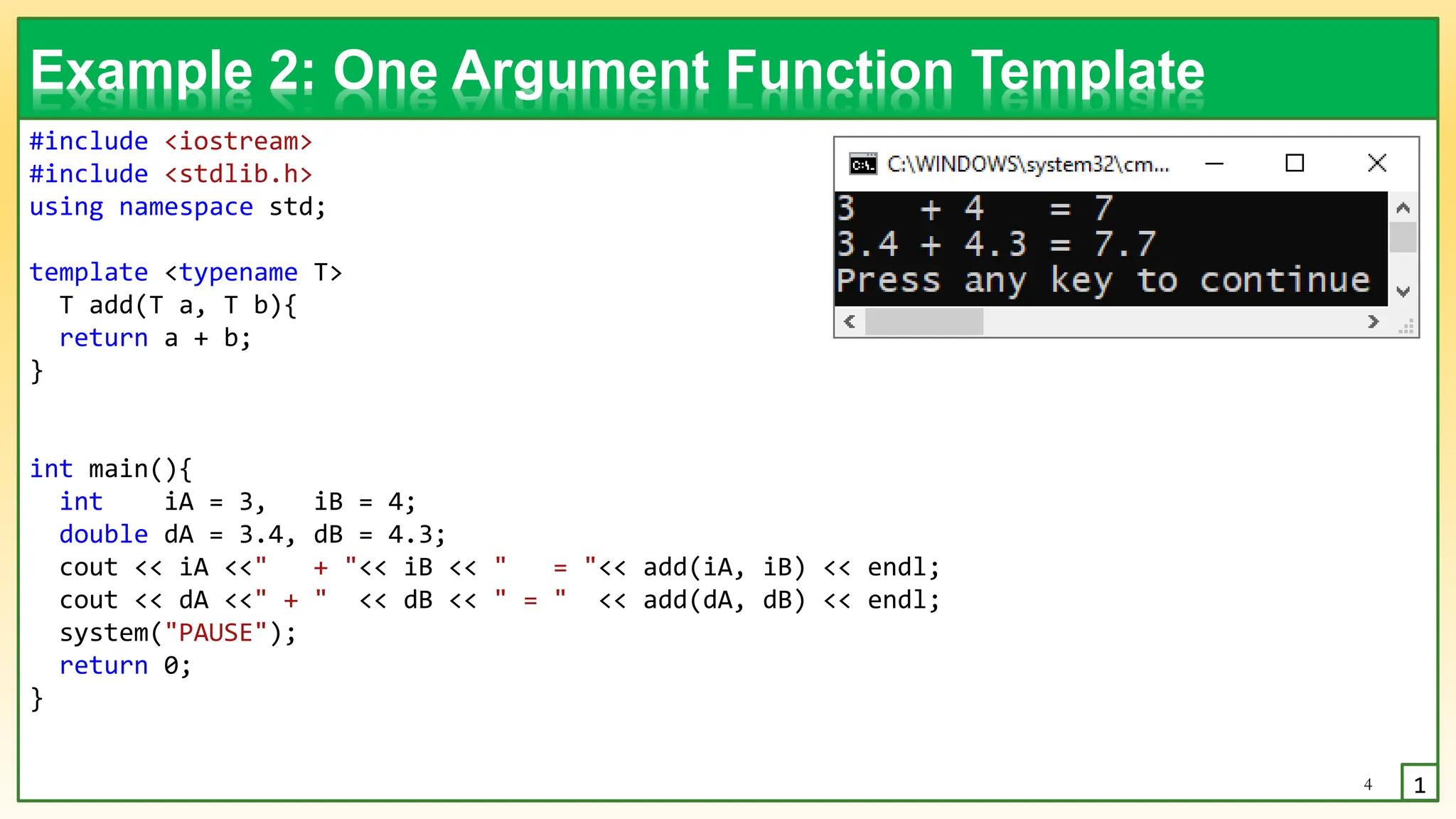
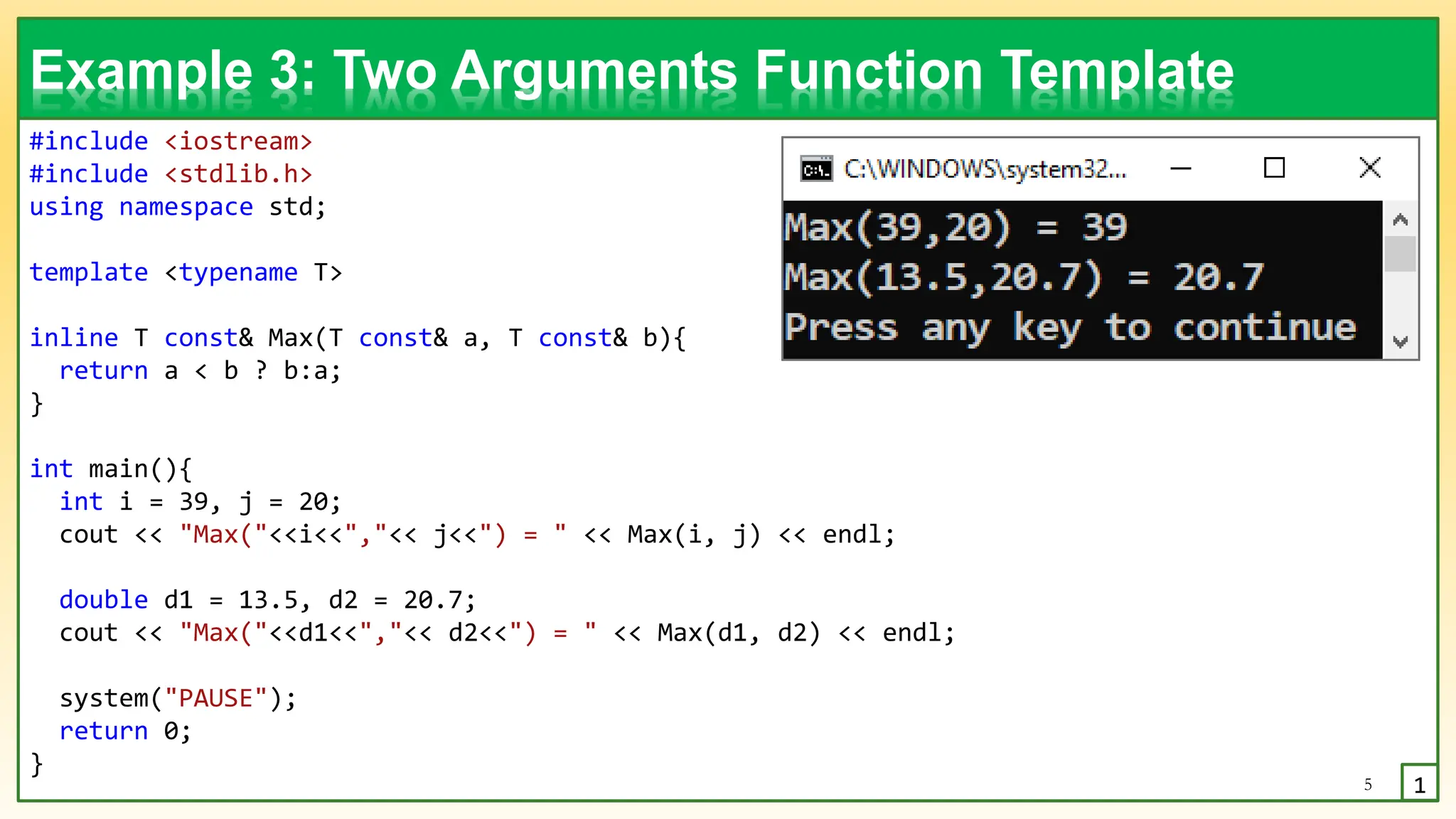

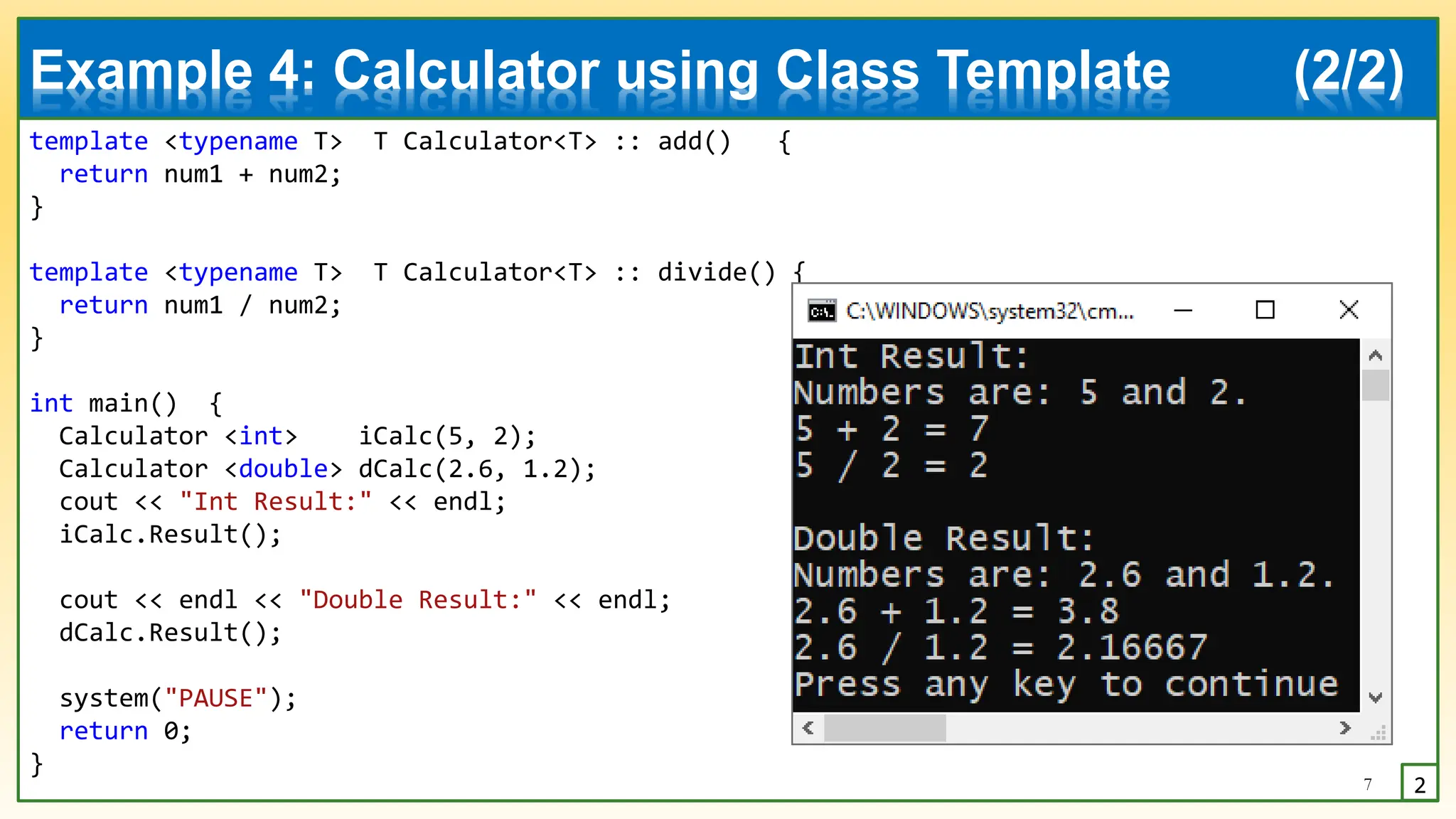
![#include <iostream>
using namespace std;
const int SIZE = 3; // stack size
template <typename T> class Stack {
private:
T stack_array[SIZE]; int top;
public:
Stack() { top = -1; }
bool Is_Empty() { return top <= -1; }
bool Is_Full () { return top >= SIZE-1; }
void Push ( T data );
void Pop ( );
T Top();
};
template<typename T> void Stack<T> :: Push(T data) {
if (Is_Full()) // if stack full,
cout << "Error: Stack is full"<< endl;
else
stack_array[++top] = data;
}
8 2
Example 5: Stack Using Class Template (1/2)](https://image.slidesharecdn.com/ctemplates-240518103944-e50ec3c7/75/Object-Oriented-Programming-using-C-C-Templates-pptx-8-2048.jpg)
![template<typename T> void Stack<T> :: Pop() {
if (!Is_Empty()) top--;
}
template<typename T> T Stack<T> :: Top() {
if (!Is_Empty())
return stack_array[top];
return NULL;
}
int main() {
Stack<int> st;
int i = 1;
while(!st.Is_Full()){
st.Push(i++*11);
}
while(!st.Is_Empty()){
cout << st.Top() << endl;
st.Pop();
}
system("PAUSE"); return 0;
}
9 2
Example 5: Stack Using Class Template (1/2)](https://image.slidesharecdn.com/ctemplates-240518103944-e50ec3c7/75/Object-Oriented-Programming-using-C-C-Templates-pptx-9-2048.jpg)
